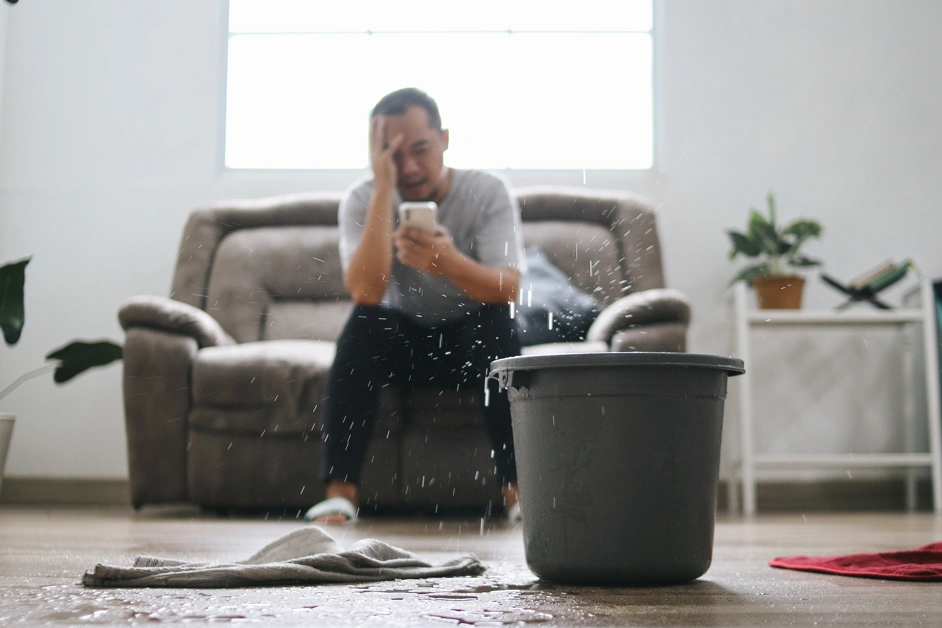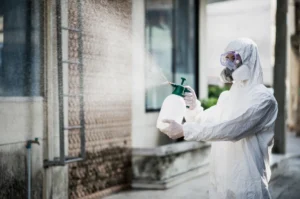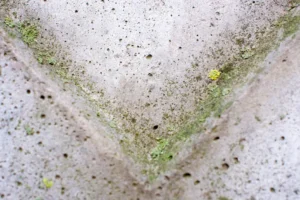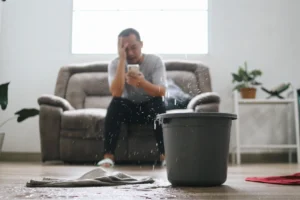Every year, hundreds of households face unexpected water issues. This leads to costly repairs. Water damage compromises your possessions and weakens your home’s structure. It can also harm air quality if not addressed promptly.
Let us guide you with the top ten water damage restoration tips you should know by 2025. These ideas will allow you to respond fast and save money in the future.
Why Immediate Action is Important?
Each second counts in water damage. If you delay cleanup and restoration, it can cause a chain reaction of serious issues.
Here’s what happens when you wait:
-
Mold Growth
Mold develops within 24 to 48 hours of water exposure. Once it spreads, it can cause allergies and respiratory issues. It can also produce hazardous reactions, in children and the elderly.
-
Structural Damage
Water seeps through the drywall, floor, and insulation. It damages the structure of your home from the inside out. It can also endanger the integrity of your walls, ceilings, and foundation, if ignored.
-
Increasing Costs
The longer you wait, the more expensive the repairs will be. A simple water extraction may become reconstruction and mold remediation.
Tip #1: Prioritize Your Safety First
It is important to keep everyone safe first in any water damage situation. Water damage has hidden dangers such as electrical hazards, structural problems, and contaminated water.
Here’s what to do:
- Turn the power off if water is near electrical outlets or appliances.
- Avoid touching contaminated floodwater.
- Keep your children and pets far from the affected areas.
- Wear protective gear if you need to enter the space.
Tip #2: Identify the Source of Water Damage
Before you begin any cleanup, you must locate and stop the source of the water. If not, the damage will spread regardless of how much water you remove.
Common sources include:
- Burst or leaking pipes
- Roof leaks from storms or clogged gutters
- Sewage backups
- Appliance malfunctions
- Foundation cracks or basement leakage
Tip #3: Begin Water Extraction Immediately
Once the water source is under control, remove any standing water as soon as possible. The longer the water sits, the deeper it penetrates floors, walls, and furniture. It increases the risk of mold, decay, and irreparable damage.
If the water level is low, you can use:
- Wet/dry vacuums
- Mops and towels
- Buckets for scooping
Tip #4: Remove and Dry Affected Items
After removing any standing water, clear out any water-soaked items. Start the drying process. Leaving damp objects in place promotes mold, germs, and lasting odors.
Start by removing:
- Rugs, carpets, and furniture
- Wet clothing, boxes, and personal items
- Damaged electronics
Use fans, dehumidifiers, and open your windows to speed up drying. Dry wood, textiles, and paper first. They are the most susceptible to mold.
Tip #5: Clean and Disinfect
Don’t forget to clean and disinfect when everything is dry. Water damage often releases pollutants, especially if the cause is sewage or a flooded basement.
Here’s what you should focus on:
- Hard surfaces: Use disinfectants to kill germs, viruses, and mold spores.
- Soft materials: Clean soft materials with hot water and detergent. Dispose of anything that smells musty or has mold growth.
- Hidden areas: Sanitize areas where moisture can accumulate.
Tip #6: Check for Hidden Moisture
If surfaces appear dry, it does not mean the task is complete. Moisture may hide beneath floors, behind walls, and in insulation. It causes mold and structural damage over time.
Here’s where to look:
- Behind baseboards and drywall
- Under carpets and flooring
- Inside ceilings and crawl spaces
Also Read: How Long Does Mold Remediation Take
Tip #7: Document All Damage for Insurance
Document the damage before you throw or repair damaged items. This is critical to a seamless insurance claim. It can help you get the return you deserve.
What to do:
- Take clear pictures and videos of all affected places and items.
- Take note of when the damage happened and what caused it.
- Keep receipts for repairs and cleaning services.
- List all broken items, including their estimated values.
Many insurance companies request this documentation to speed up your claim. The more organized you are, the higher your chances of receiving complete coverage.
Tip #8: Prevent Mold Growth
Mold forms within 24 to 48 hours of water damage. It is difficult and expensive to remove once it spreads. That is why mold prevention is an important water damage restoration strategy.
To reduce the risk:
- Dry everything, particularly porous materials like drywall, carpet, and insulation.
- Use dehumidifiers and fans to lower moisture levels in the air.
- Disinfect all surfaces with antimicrobial solutions. These can kill spores before they spread.
- Keep the place well-ventilated and monitor the humidity levels.
Tip #9: Restore and Rebuild Damaged Areas
After cleaning and drying, it’s time to repair the damaged areas of your home. This includes replacing drywall, flooring, insulation, or cabinetry.
Quality repair guarantees that your property is secure and looks new again. It helps prevent future problems, such as mold or structural damage.
Also Read: How to Stop and Repair Water Damage in Your House?
Tip #10: Plan for Future Prevention
The best way to deal with water damage is to prevent it from happening again. After rebuilding your property, protect it from future water damage issues.
Consider:
- Regular inspection and maintenance of plumbing, roofing, and gutters.
- Use sump pumps or backflow valves to prevent basement flooding.
- Improving the drainage around your home’s foundation.
- Use a dehumidifier to monitor indoor humidity.
- Updating your insurance policy with flood or water damage coverage.
Protect Your Property with Smart, Swift Action
Water damage happens. And sometimes, it comes when you least expect it. But with the proper knowledge and a proactive approach, you can limit the damage. You may secure your investment and restore your space quickly.
These top ten water damage restoration tips will help you protect yourself by prioritizing safety and preparing for future prevention.
Ready to Put These Tips into Action? Let the Experts Help
The sooner you act, the more money and time you can save. While these expert water damage restoration tips can help you, having a reliable team makes a huge impact.
Mold Master Restoration not only follows these tips; we live by them. From water extraction to moisture tracking, our team combines experience and urgency. We are ready to respond fast and restore your home with professionalism.
Trust Mold Master Restoration. We provide reliable water damage restoration services.








